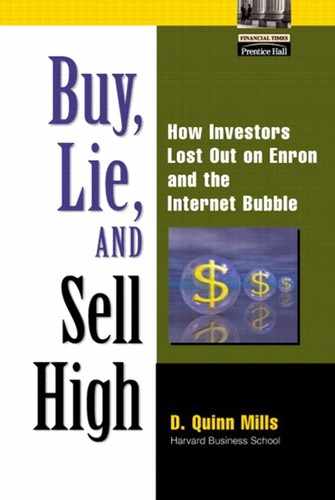Mass Hysteria or Fraud
How did it happen that so much paper of little value was sold to so many investors for such high prices? The banks found themselves trapped, to some extent, by the push from the companies and their backers. So high was the demand from investors that entrepreneurs and their backers—angels and venture firms—were pressing the banks to take them public quickly.
Usually, investment banks are on the look-out for new companies and like to establish a relationship with a potential client as soon as possible. So when entrepreneurs or their backers came to visit the bank to promote their company, it was usually welcomed by the bank. However, during the bubble, potential clients began demanding that the bank underwrite a public offering prematurely, in the bank's thinking, causing a strain on the relationship. If a bank refused an offer to take a potential client public in three months, for example, the client would often find another bank willing to do so. And so competition among the banks for underwriting fees caused banks to abandon their previous criteria for when a company was ready for the public market, and instead took low-quality paper to market.
As the competition for fees among banks grew, bankers increasingly took the initiative to be in touch with potential clients by four methods. First, they reached out to venture firms with whom they'd had relations previously to discover what was in the VCs' inventory of new companies. The banks would press the VCs to urge the entrepreneurs to go to the banks.
Second, the large banks have their own investment managers, and heard about potential deals from the managers and partners in these departments.
Third, banks often manage the investments of people with great wealth who were often angel investors in start-ups themselves, and the bank heard about the start-ups from them.
Finally, bank partners sometimes had business or personal relationships with entrepreneurs, and these provided an entree for the bankers.
Thus the bubble proceeded by bankers initially looking askance at early IPOs and high valuations, then seeing the fee opportunities as some banks took some deals forward to test the market, then proactively seeking out potential clients using the several connections which bankers might find to entrepreneurs. From reluctant participants, the banks became active proponents of the bubble.
Through all this, as the banks grew more and more hungry for the large fees generated by underwriting dot-com offerings, power was shifting. At the beginning of the bubble, banks were gatekeepers, protecting the investing public by rejecting premature applications for public offerings. At the height of the bubble, power had shifted to the entrepreneurs who played bank against bank to get companies taken public at the earliest opportunity and at the highest valuations. The banks had slid from protecting the retail investor to some degree, to competing for a place in the fleecing of the investor.
As the bubble progressed and investment banks sold more shares to the retail public in companies whose futures were uncertain, some partners in investment banks grew concerned that someday they might be held accountable. Debates occurred as to whether or not certain companies should be offered to the public, and if so, at what price.
A goal of banks, imposed by the Security and Exchange Commission, is to protect the retail and institutional investor. If the banks which sold IPOs to the public believed that the businesses were viable, then they were very often badly mistaken; if they believed the companies were not viable but sold them anyway, then they were engaged in fraud. Valuations of many companies were off by a huge amount, and it isn't surprising that some bankers were worried that shareholder lawsuits might result. They protected themselves as best they could, considering that many people in the banks were fully caught up in the mania and were not concerned about possible future legal problems. Those who were concerned tried to prevent the most egregious cases from being taken public, and for those which were offered to the public, they sought to make sure that the prospectuses were replete with cautionary language to investors, and that nothing said by entrepreneurs on road shows was left in the hands of potential investors.
